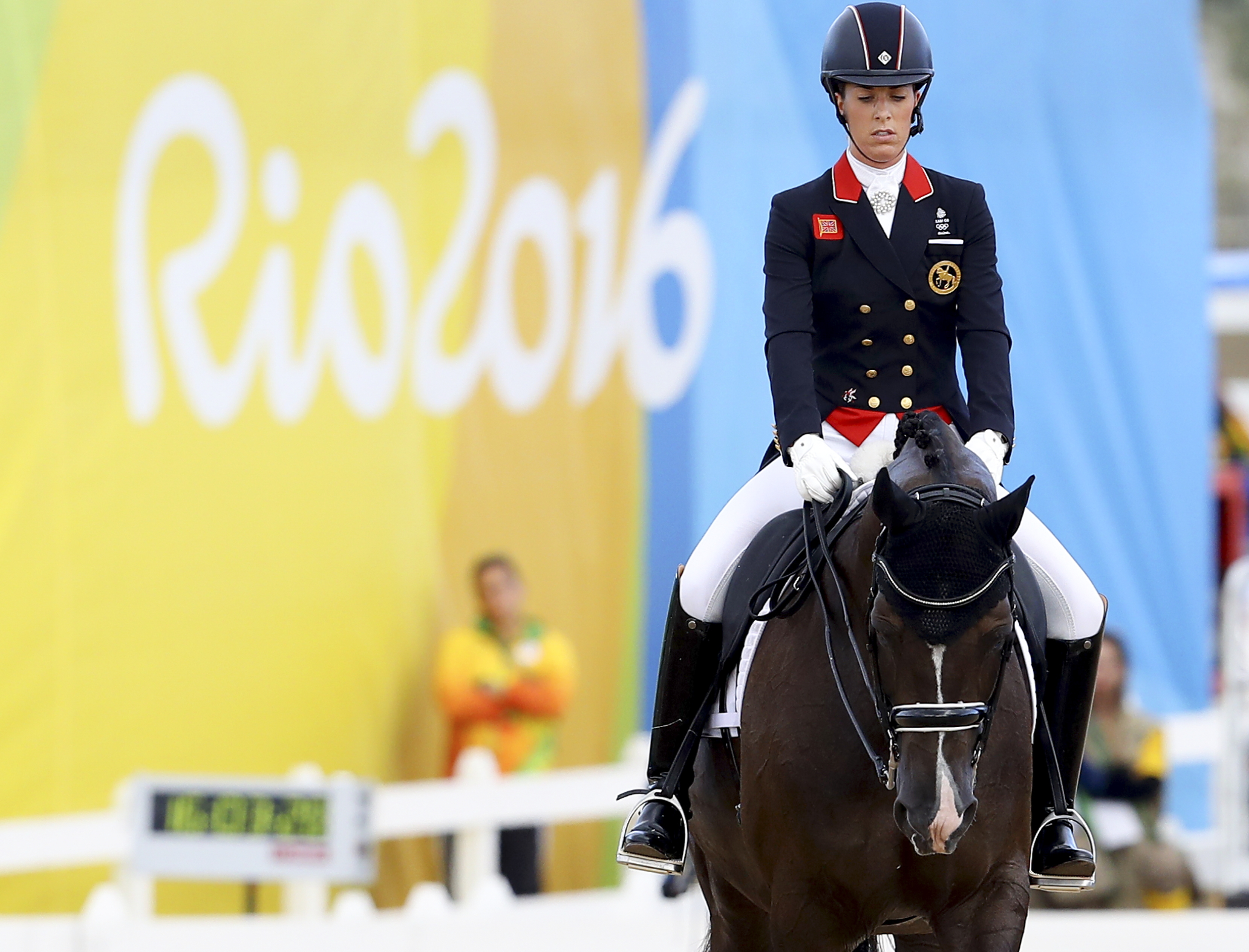Q: I find that riding with my hands far apart helps round my horse’s neck and put him on the bit. A clinician has told me to keep my outside hand close to the neck, pointing toward my navel, and my inside hand away from the neck, especially in turns and circles. Where should the hands ideally be positioned?
—Lily McElhany of Carson City, Nevada

A: It can be challenging to find the right hand position as every instructor has his/her own way and has had different training experiences. Here are a few things every rider should be aware of and keep in mind while working on a correct hand position.
Your whole body needs to be in line for the hands to find a correct position. I like to call it a “natural” position because it should not be forced. Your hands should be an extension from the lower arms, which should be relaxed but steadily carried, enabling you to feel the horse’s mouth and communicate through the rein aids. This is only possible when your fingers are closed. Your thumbs should be slightly bent and lightly pressed down on top of the reins, where they pass over the index fingers, to prevent slipping. Your hands should be held with the knuckles vertical and at such a height that your forearm, hand and the horse’s mouth are approximately in a straight line when viewed from the side.
We are all built differently. What works for one rider may be more difficult for another. Riders with longer arms can often have more bend in their arms; riders with shorter arms show less bend. That is acceptable and even varies depending on the length of your upper body.
An easy way for you to check the correct hand position frequently during a ride is to stretch out both pinky fingers toward your horse’s withers and see if you can reach them. If your hand position changes or is unsteady, it will be difficult for you to continue to reach toward your horse’s withers. Ideally, the positioning of your hands should be in line with the description above. The distance between your hands should depend on the thickness of your horse’s neck. However, the line from your elbow to the horse’s mouth also needs to be straight when seen from above. Usually the reins should lightly touch both sides of the horse’s neck.
Another important detail that helps you determine if you carry your hands correctly is to check the position of your upper arms. Your arms should be hanging down out of your shoulders in a relaxed manner and in close contact to your upper body. To achieve this, a slight push of your arms against your sides may be necessary. Some riders need to push their arms a little bit forward to prevent the elbows from moving behind the upper body. Usually this is also a sign that the reins are too long.
Holding the reins too far apart will usually interfere with the above-mentioned correct lines and your correct position. In some cases, a rider’s hands move wide apart because the horse has not released his topline and is not swinging in his back. In that situation, it will seem that the only way to keep the horse’s head down is to ride with wide, strong arms. But this is not correct training, just a Band-Aid to cover up the problem.
Often we find ourselves with no eyes on the ground to guide us through the ride. Riding past a mirror is a great way to check your hands and also your body’s position—first in the walk, then in trot and canter. Another idea is to have somebody take a picture or video of your ride. Drawing the correct lines into your own picture can help you visualize and work on a more correct hand position.
And don’t forget that all of us, including most top riders, instructors and clinicians, have developed our own personal way of training a horse and coaching our clients. Usually, the higher our level of training and competing, the more refined our style is. Horses who are trained up to the highest level in dressage are able to take a lot of (positive) pressure and energy from the rider to perform successfully.
The further along a horse is in his training, the more he is connected to your seat and the more he trusts all of your aids, including the rein aids. For correct engagement on straight lines as well as all bent lines and lateral movements, you can push the outside or even inside rein against your horse’s neck to secure the frame or a movement.
If the horse has a correct understanding of his job and is physically capable, it should be possible to adjust your hands through various positions or rein lengths, slightly changing flexion and neck position without disrupting the harmony.
Yvonne Kusserow is a German FN-licensed Equine and Business Master (Pferdewirtschafts meisterin). She operates Rocking M Stables in Texas, a European-style riding school with school horses specializing in dressage. The facility also offers boarding and training. (yvonne-kusserow-dressage.com).











